
Sustainable Water Management in Landscape Design
Chosen theme: Sustainable Water Management in Landscape Design. Welcome to a place where beauty and resilience meet. Together, we will turn every raindrop into a resource, shape thriving plant communities, and design outdoor spaces that waste less and give more. Subscribe and join the conversation as we build water-wise landscapes, one thoughtful detail at a time.
A Water-Wise Vision for Every Yard

One inch of rain on a 1,000-square-foot roof yields about 623 gallons. Imagine directing that gift into gardens, not gutters. Measure your catchment area, dream up storage, and tell us how you will put those gallons to work.
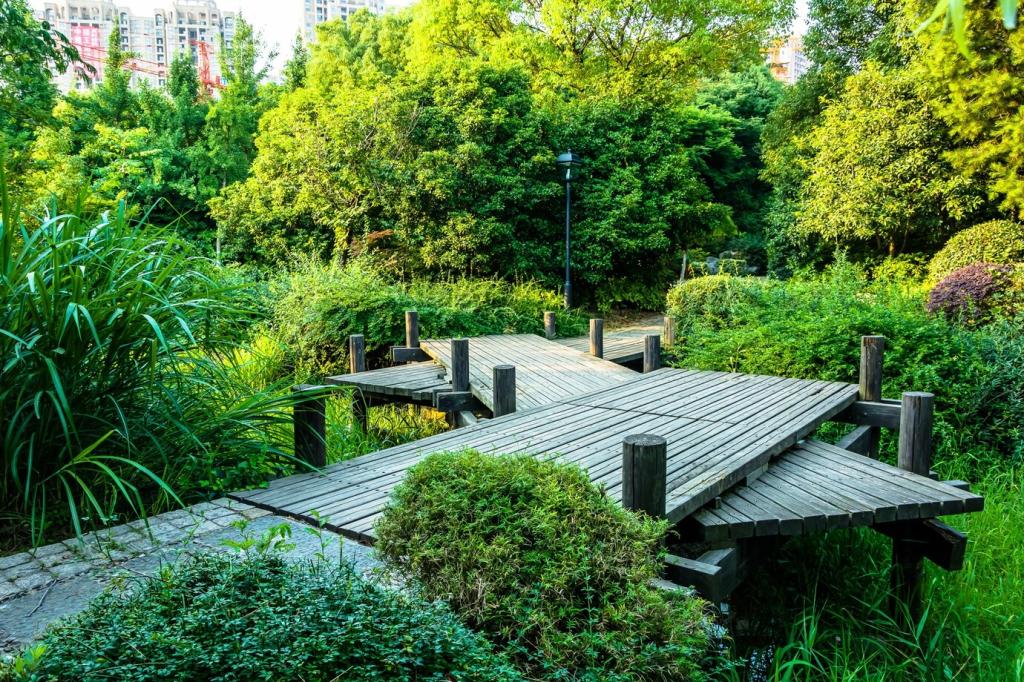
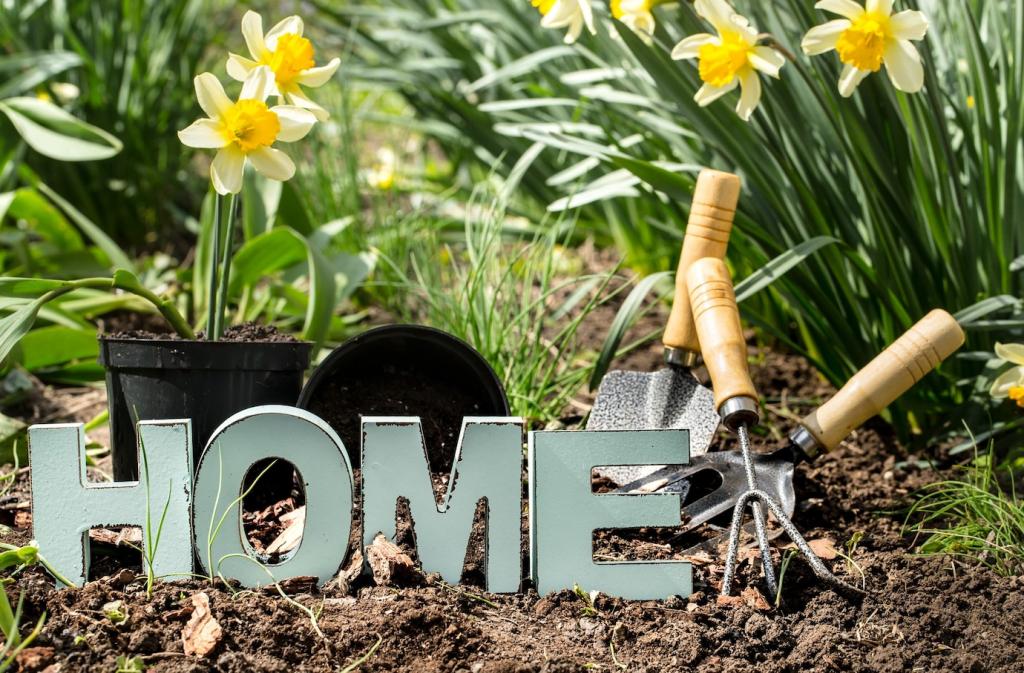
Rain Gardens, Bioswales, and Infiltration
Start with a rule of thumb: size the garden at roughly 10% of the roof or paved catchment, adjusting for soil infiltration. Include a shallow basin, overflow path, and native plants. Post your catchment numbers and we will help refine the estimate.
Rain Gardens, Bioswales, and Infiltration
Aim for a mild longitudinal slope, roughly one to four percent, with check dams or rock weirs to slow flows. Use tough native grasses and sedges for root reinforcement. Sketch your swale’s flow path and share how you will handle safe overflow.
Smart, Efficient Irrigation
Drip Done Right
Use pressure-regulated valves, filters, and matched emitters. Space emitters to match plant root spread, then mulch generously to reduce evaporation. Add flush valves at line ends for easy maintenance. Post a photo or plan of your drip layout for tips.
Sensors and Schedules that Think
Pair weather-based controllers with rain shutoff and soil moisture sensors. Adjust seasonally, often reducing runtime thirty to seventy percent compared to summer highs. Try a weekly check: if soil is cool and crumbly, delay watering and log your savings.
Hydrozoning for Plant Health
Group plants by water needs, exposure, and soil. Put thirstier edibles or new plantings on separate valves from established natives. This simple zoning cuts overwatering and disease. Share your plant groups, and we will help refine the valve map.
Planting with Purpose: Natives and Drought Champions
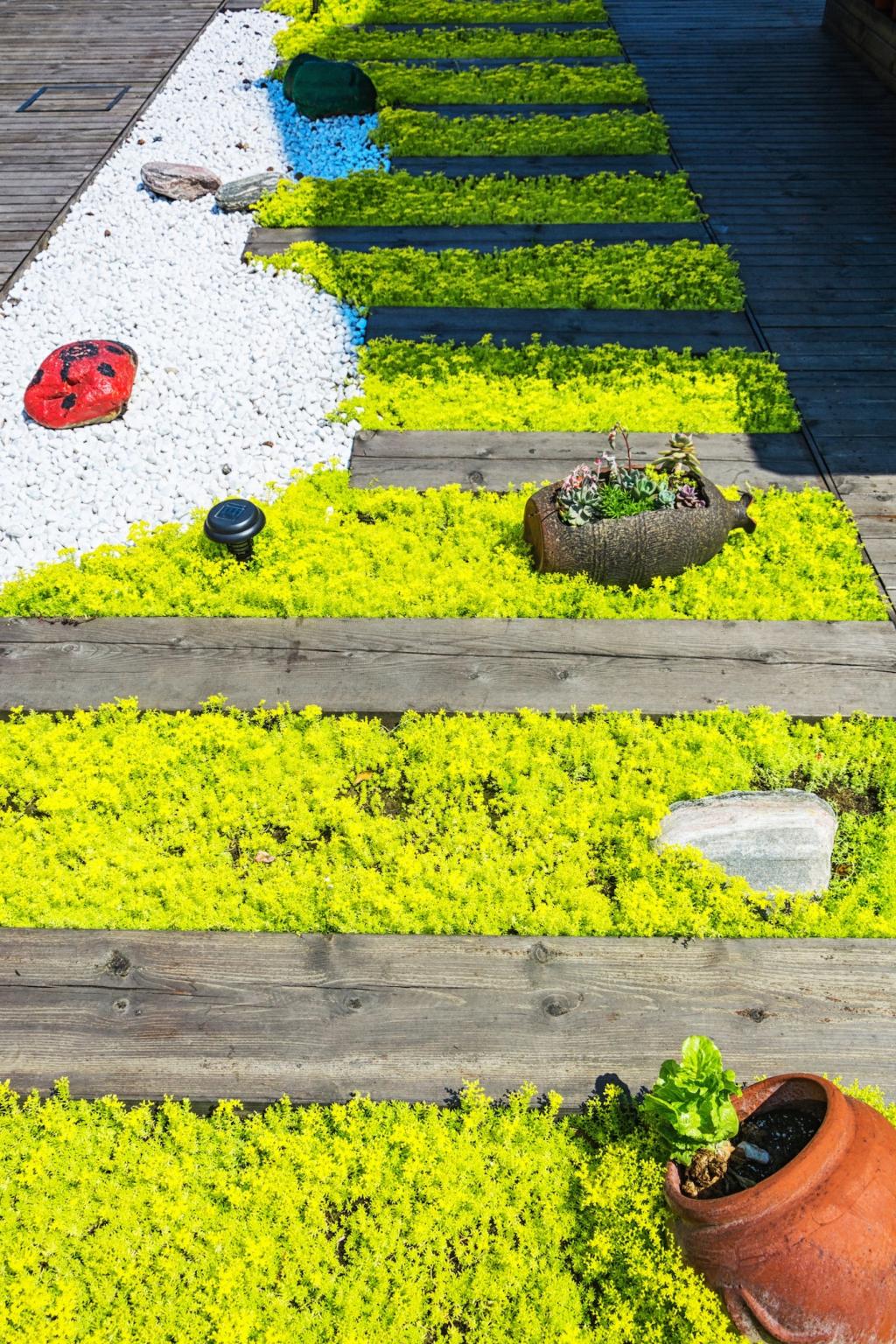
Choose Locals that Love Your Rain
Select plants adapted to your ecoregion’s wet and dry cycles. Natives typically need fewer inputs and support birds and beneficial insects. Share three native favorites, and we will help position them for both aesthetics and water capture.

Deep Roots, Deep Resilience
Prairie perennials and many shrubs send roots deep, breaking up soil and storing moisture. This living infrastructure reduces runoff and irrigation needs. Consider mixing root depths for stability. Tell us which deep-rooted species you will trial this season.
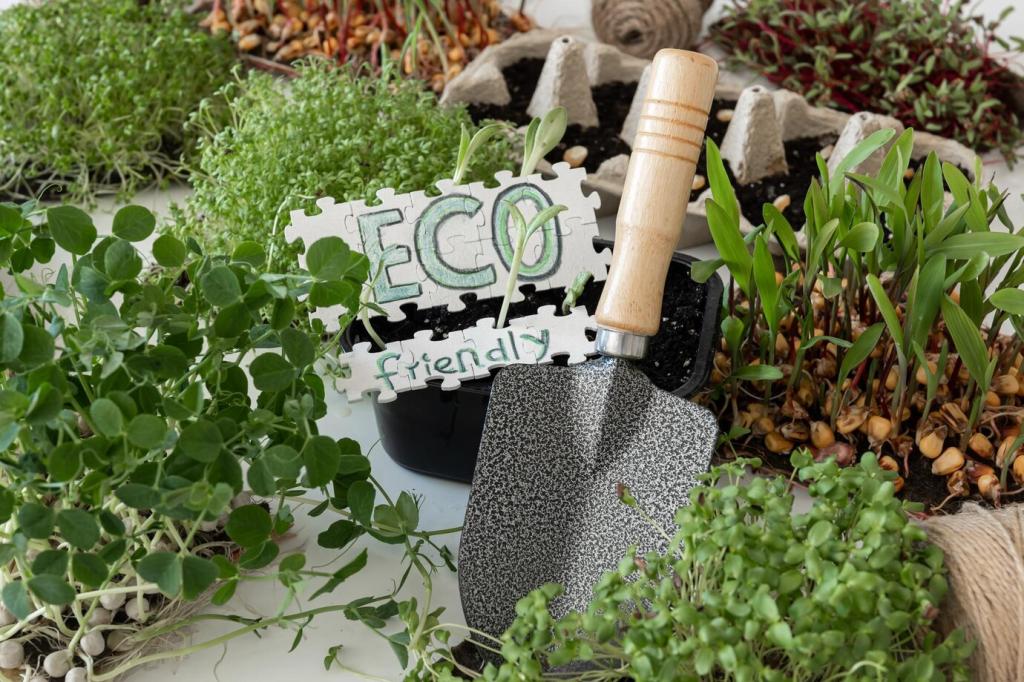
Color Through the Dry Season
Create sequences of bloom with drought-hardy perennials and Mediterranean shrubs. Celebrate texture, seed heads, and foliage color when flowers rest. Post your palette idea and we will help balance structure, shade, and seasonal water needs.
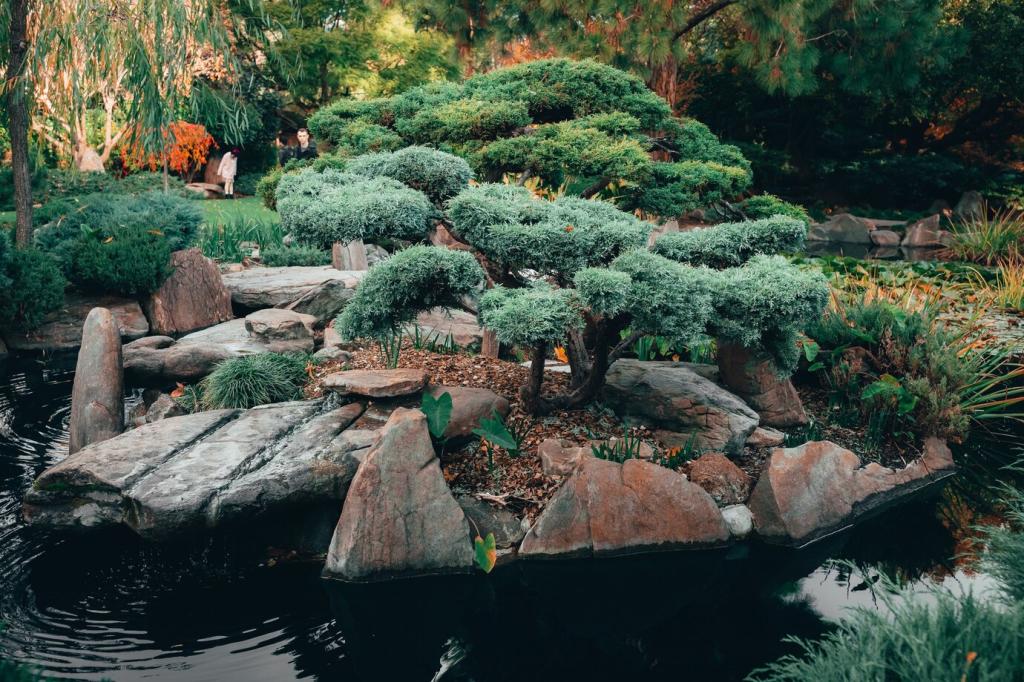
Harvest and Reuse: Cisterns, Barrels, and Greywater
Install screened inlets, first-flush diverters, and opaque tanks to deter algae and mosquitoes. Place barrels near high-need beds and overflow into a rain garden. Estimate one inch of rain per thousand square feet as 623 gallons and plan accordingly.
Harvest and Reuse: Cisterns, Barrels, and Greywater
Laundry and shower water can irrigate mulch basins for trees and shrubs. Use biodegradable detergents, lint filters, and avoid pooling. Always check local codes. Share your layout sketch, and we will help route lines safely and effectively.
Build with open-graded stone reservoirs beneath interlocking permeable pavers. Use clean joint aggregate and schedule periodic vacuuming to prevent clogging. Test infiltration annually. Share your soil type and we will suggest a resilient base thickness.
Hardscape That Helps
Shape subtle swales and slope hardscape about two percent away from structures, guiding water to planting areas. Integrate curb cuts or level spreaders for even distribution. Post a quick contour sketch and we will help refine the flow path.
Hardscape That Helps
Measure, Celebrate, and Share
Write a Water Budget You Can Keep
Establish a baseline from last year’s bills, then set a realistic reduction target, perhaps thirty percent over two seasons. Log irrigation runtimes, rainfall, and soil moisture snapshots. Post your first-week numbers and we will cheer you forward.
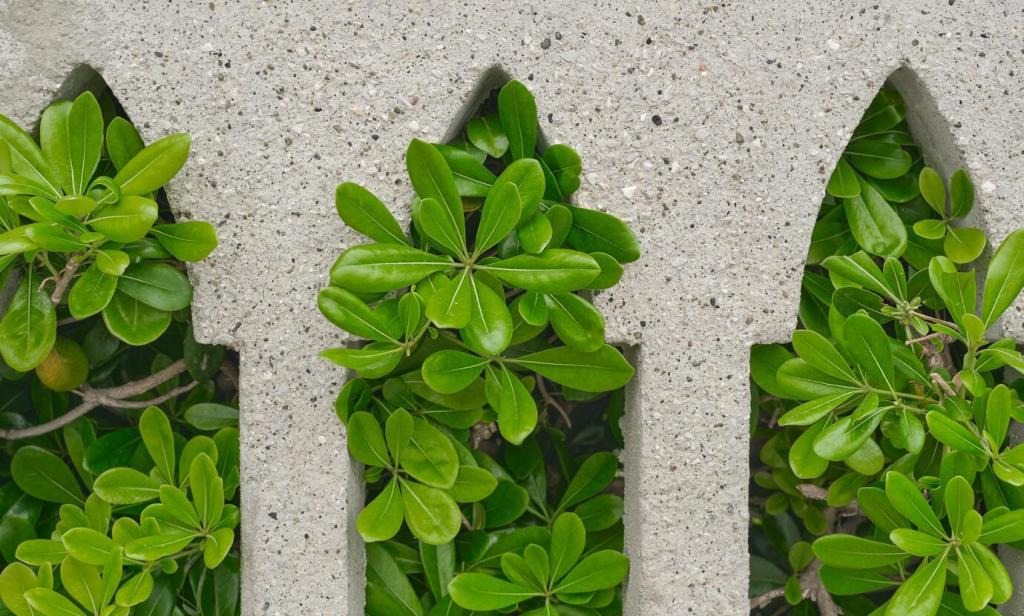

Story from the Block: Saving a Summer
Our neighborhood park replaced turf with bioswales, native beds, and a 1,500-gallon cistern. Summer irrigation dropped dramatically, and puddles vanished. Kids painted raindrop markers along the swales. Share your project’s before-and-after and inspire someone nearby.
